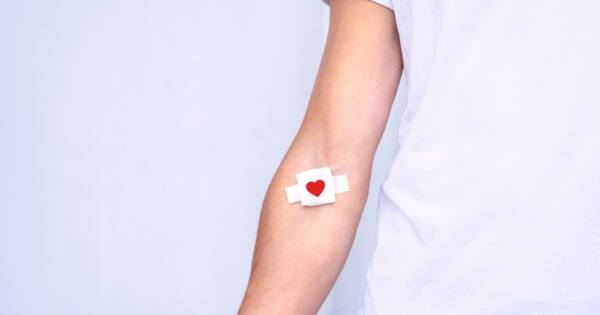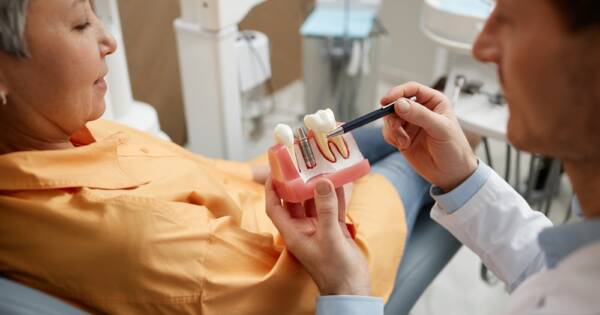Psoriasis is a chronic skin condition characterized by red, scaly patches that develop due to an overactive immune system triggering excessive skin cell production. This condition can vary in severity and may significantly impact daily life. Fortunately, you can explore comprehensive information about psoriasis online, including its symptoms, common triggers, and a range of treatment options. Understanding this condition better can empower you to manage flare-ups and maintain healthier skin effectively.
Signs and Symptoms
Common signs and symptoms of psoriasis may include:
- Rashes or bumpy red patches of inflamed skin;
- Itchy, painful, dry cracked skin: that may easily bleed, especially when scratched;
- Scaly plaques on the scalp, and;
- Problems with your fingernails and toenails including thickening, ridging, discoloration, pitting and detachment.
Psoriasis patches can range in severity from mild cases with a few spots of dandruff-like scaling to major eruptions that cover large areas.
Most types of psoriasis are cyclical. This means flares may happen for a few weeks or months at a time, before subsiding or going into complete remission.
Triggers and Risk Factors
Although the exact cause of psoriasis is not known, there are well-established triggers and risk factors for the disease. Factors that may serve as triggers for psoriasis include:
- Family history;
- Stress;
- Obesity;
- Smoking;
- Excessive alcohol consumption;
- Bacterial and viral infections, including strep throat, tonsillitis, and HIV;
- Skin injury, such as a cut or scrape, a bug bite, a new tattoo, or a severe sunburn;
- Certain medications, including beta-blockers, lithium, and antimalarial drugs;
- Cold, dry weather, and;
- Vitamin D deficiency
When to See a Doctor
Are you concerned that you may have psoriasis? A dermatologist — a doctor who specializes in diseases of the skin — can help diagnose and treat your psoriasis. These skin specialists are a great resource. Plus, they can provide valuable information on triggers to avoid, symptoms, and treatments for the disease. If you are looking for a dermatologist, it is best to get a referral/recommendation from your primary care doctor or check with the American Academy of Dermatology.
Diagnosis
The diagnosis of psoriasis is fairly straightforward.
Your primary care doctor or dermatologist will take your medical history and perform a physical examination, including a thorough survey of your skin, nails, and scalp. They will ask you about your symptoms, how long you’ve had them, and what makes them better or worse.
Since psoriasis can look a lot like eczema and other skin diseases, diagnosing it can sometimes be difficult and may require a skin biopsy for a definitive diagnosis. If you are unfamiliar with what a skin biopsy is, your doctor will remove a small sample of your skin to look at under a microscope.
Up to one-third of patients diagnosed with psoriasis also develop psoriatic arthritis. So, if you have symptoms such as swollen and painful joints, your doctor may order blood tests and X-rays to rule out other forms of arthritis.
Despite its major effects on quality of life, psoriasis is underdiagnosed and undertreated.
Types
A definitive diagnosis of the type of psoriasis is of utmost importance, as it will help a doctor formulate an appropriate treatment plan. While most individuals diagnosed with psoriasis have only one type, there at least five types of psoriasis.
1. Plaque Psoriasis
Plaque psoriasis, also sometimes referred to as “psoriasis vulgaris”, is the most common type of this disease. In fact, it represents 80 percent of all diagnoses.
This type is characterized by red, inflamed patches or plaques of skin that are typically covered with silvery scales. These patches or plaques are commonly located on the elbows, knees, and scalp.
2. Guttate Psoriasis
Guttate psoriasis is common in young adults and children and represents less than two percent of cases.
This form of psoriasis is characterized by small pink spots, which can be scaly, on your torso, arms, legs, and scalp. The most common trigger for this type of psoriasis is a bacterial infection, such as strep throat.
3. Pustular Psoriasis
Although its relatively uncommon, pustular psoriasis is more common in adults.
It is characterized by pus-filled blisters that occur mainly in the palms of the hands, soles of the feet, or fingertips. Despite how they look, the blisters are not infectious.
4. Inverse Psoriasis
Inverse psoriasis is characterized by smooth patches of red, inflamed skin. Be careful as friction and sweating will cause the patches to get worse. Mainly caused by fungal infections, this type of psoriasis develops under armpits or breasts, in the groin, and in or around skinfolds of the genitals.
5. Erythrodermic Psoriasis
Erythrodermic psoriasis is the least common type of the disease. Appearing like a sunburn, this severe and very rare type of psoriasis covers your entire body with a red, peeling rash that can itch or burn intensely.
Although rare, this type of psoriasis can be life-threatening and should be immediately evaluated by a doctor.
Treatments
Unfortunately, psoriasis has no cure. As such, treatments for the disease aim to reduce inflammation and scales, slow the growth of skin cells, and remove plaques.
The best treatment varies by individual and takes into consideration the type of psoriasis you have, where it is on your body, and the possible side effects of the drugs used to treat it. For mild cases, there are over the counter treatments, such as hydrocortisone ointment, that may be helpful. Still, others may benefit from topical treatments, oral or injected medications, and light therapy, depending on the severity of the disease.
Topical Treatments
If you have mild to moderate symptoms, topical creams and ointments applied directly to your skin may be helpful to control psoriasis.
Topical psoriasis treatments include:
- Steroid-Based Creams: Topical steroids are one of the mainstays of psoriasis treatment, and they can be very effective at treating all aspects of psoriasis when used on a short-term basis. Continuous administration of these agents is not recommended as they can have side effects such as burning, dryness, irritation, and thinning of the skin.
- Vitamin D3 Analogs: These medications are very effective at slowing the growth of skin cells. Calcipotriene (Dovonex) or calcitriol (Vectical) are often combined with a steroid-based cream.
- Retinoids: These medications are derivatives of vitamin A and work by inhibiting inflammation. Tazarotene (Tazorac) is the textbook example of a topical retinoid.
- Calcineurin Inhibitors: These medications reduce inflammation and smooth out psoriatic plaques. However, their continuous or long-term use is not recommended due to increased risk of skin cancer and lymphoma. Tacrolimus (Prograf) and pimecrolimus (Elidel) are examples of these inhibitors.
Other less commonly used topical agents for the treatment of psoriasis include moisturizers and Salicylic acid.
Oral or Injected Medications
For those with moderate to severe symptoms, topical treatments are likely to be combined with oral or injection medications. As a result, many of these medications have severe side effects. Hence, they are only used for short periods of time and alternated with other forms of treatment.
Oral or injection medications used for the treatment of moderate to severe psoriasis include:
- Methotrexate: This oral medication suppresses your immune system. It works by slowing the growth of skin cells and suppressing inflammation. In addition to these effects, it can slow the progression of psoriatic arthritis.
- Cyclosporine: This oral medication also works by suppressing your immune system and slowing the overzealous growth of skin cells. Cyclosporine can improve the signs and symptoms of psoriasis in as little as two weeks. It should be used no longer than three or four months due to potential side effects, such as kidney disease, infections, high blood pressure, and cancer.
- Acitretin: Exactly how this oral retinoid treats psoriasis is unknown. However, considering it is a form of retinoid, it most likely slows the growth of skin cells. Women should avoid pregnancy — sometimes up to three years — after taking acitretin due to an increased risk of serious birth defects.
- Biologics: Most of these medications are administered via injection and alter your immune system, which is why they are sometimes referred to as immunomodulatory agents. Examples of biologics include etanercept (Enbrel), infliximab (Remicade), adalimumab (Humira), ustekinumab (Stelara), and secukinumab (Cosentyx).
Light Therapy
Light therapy (also known as phototherapy) can be used alone or combined with topical treatments and oral or injection medications. This form of psoriasis treatment utilizes artificial ultraviolet light — namely UVA or UVB rays.
Light therapy kills the overactive white blood cells that are attacking healthy skin cells and causing the rapid overgrowth of skin cells.
Light therapy for the treatment of moderate to severe psoriasis includes:
- Broadband and narrowband UVB light therapy;
- Goeckerman therapy, which is the combination of coal tar and UVB light therapy;
- Psoralen plus UVA, which combines the light sensitizer psoralen with UVA light therapy;
- The excimer laser, which requires fewer sessions than traditional light therapy and only targets abnormal areas of skin without harming healthy skin.
Living with Psoriasis
Most people think of psoriasis as only a skin condition, but it affects a lot more than your skin. Living with psoriasis can be tough, not only on those with the disease but also on their families. As a result, it can be challenging to cope with — especially if it’s covering large areas of your body or can be readily seen by other people. Additionally, there is a greater negative impact on the quality of life of patients with moderate to severe psoriasis. This is especially true of women and children.
Special attention should be paid to a patient’s diet, exercise, stress, and mental health.
Diet
Many people are of the opinion that their diet affects their psoriasis, but no studies have shown a definite connection.
Most experts agree that the best dietary advice for those with psoriasis is the same as for others with an ongoing, chronic disease. That is, follow a diet low in fats and sugars and high in complex carbohydrates, fruits, vegetables, and lean cuts of meat or other proteins.
It would also be wise to limit your intake of alcohol, as it can aggravate psoriasis.
Exercise
While you’re at it, try to get at least 30 minutes of exercise most days of the week. Regular exercise can lower inflammation, boost your mood, and keep your weight in check.
If possible, exercise outside in the sunshine. Natural sunlight not only has UVB light — which can ease psoriatic scales and patches — but also boosts your vitamin D levels, which is good for your skin and bones.
Stress
Stress is a well-known trigger for psoriasis. Accordingly, reducing excess levels of this trigger may be able to reduce flares and ease the symptoms of psoriasis.
Some methods recommended to reduce stress levels include deep breathing, meditation, yoga, and journaling.
Mental Health
Individuals with psoriasis are more likely to have low self-esteem, which makes them more susceptible to depression and anxiety. Therefore, it is important to deal with these emotional health issues. As such, a professional mental health expert and/or support group may be helpful.
Learn More About Psoriasis Today
Psoriasis is a complex medical condition with a wide range of possible complications and accompanying diseases. Since it results in considerable negative physical, mental, and social consequences, the burden of psoriasis is substantial.
As such, life with psoriasis is indeed challenging. Fortunately, with the right approach, you can reduce the flares of the disease and live a healthy, fulfilling life.





